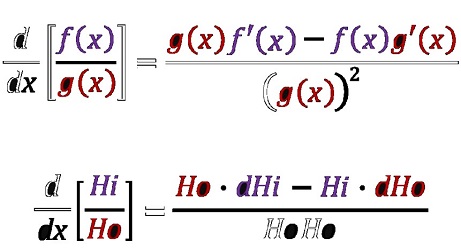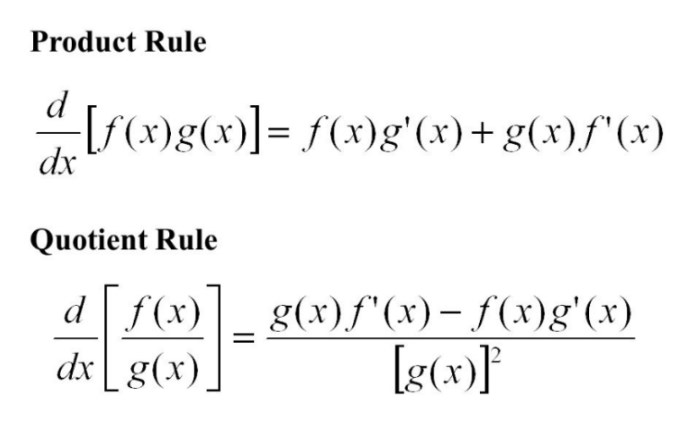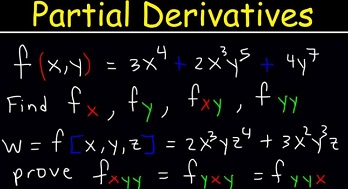Table of Contents
Quotient And Product Rule – Quotient rule is a formal rule for differentiating problems where one function is divided by another. It follows from the limit definition of derivative and is given by. Remember the rule in the following way. Always start with the “bottom” function and end with the “bottom” function squared.
The quotient rule is defined as the quantity of the denominator times the derivative of the numerator minus the numerator times the derivative of the denominator all over the denominator squared.
The Product Rule says that the derivative of a product of two functions is the first function times the derivative of the second function plus the second function times the derivative of the first function. The Product Rule must be utilized when the derivative of the quotient of two functions is to be taken.
Horizontal Asymptotes – Definition, Rules & More
Quotient Rule Derivative
Definition and Formula
The quotient rule is a formula for taking the derivative of a quotient of two functions. It makes it somewhat easier to keep track of all of the terms. Let’s look at the formula.
If you have function f(x) in the numerator and the function g(x) in the denominator, then the derivative is found using this formula:

Take g(x) times the derivative of f(x).In this formula, the d denotes a derivative. So, df(x) means the derivative of function f and dg(x) means the derivative of function g. The formula states that to find the derivative of f(x) divided by g(x), you must:
- Then from that product, you must subtract the product of f(x) times the derivative of g(x).
- Finally, you divide those terms by g(x) squared.
Mnemonic Device
The quotient rule formula may be a little difficult to remember. Perhaps a little yodeling-type chant can help you. Imagine a frog yodeling, ‘LO dHI less HI dLO over LO LO.’ In this mnemonic device, LO refers to the denominator function and HI refers to the numerator function.

Let’s translate the frog’s yodel back into the formula for the quotient rule.
LO dHI means denominator times the derivative of the numerator: g(x) times df(x).
less means ‘minus’.
HI dLO means numerator times the derivative of the denominator: f(x) times dg(x).
over means ‘divide by’.
LO LO means to take the denominator times itself: g(x) squared.
Quotient Rule Derivative Formula
Now, we want to be able to take the derivative of a fraction like f/g, where f and g are two functions. This one is a little trickier to remember, but luckily it comes with its own song. The formula is as follows:
How to Remember this Formula (with thanks to Snow White and the Seven Dwarves):
Replacing f by hi and g by ho (hi for high up there in the numerator and ho for low down there in the denominator), and letting D stand-in for `the derivative of’, the formula becomes:
In words, that is “ho dee hi minus hi dee ho over ho ho”. Now, if Sleepy and Sneezy can remember that, it shouldn’t be any problem for you.
A Common Mistake: Remembering the quotient rule wrong and getting an extra minus sign in the answer. It’s very easy to forget whether it’s ho dee hi first (yes, it is) or hi dee ho first (no, it’s not).
Derivative Product And Quotient Rule
If e(x) = f(x) . g(x) and if both derivatives exist, then
e ‘(x) = f(x) . g'(x) + f(x) . g'(x)
In words, this means the derivative of a product is the first function times the derivative of the second function plus the second function times the derivative of the first function.

Partial Derivative Quotient Rule
Partial derivatives in calculus are derivatives of multivariate functions taken with respect to only one variable in the function, treating other variables as though they were constants.
Repeated derivatives of a function f(x,y) may be taken with respect to the same variable, yielding derivatives Fxx and Fxxx, or by taking the derivative with respect to a different variable, yielding derivatives Fxy, Fxyx, Fxyy, etc. Partial derivatives are typically independent of the order of differentiation, meaning Fxy = Fyx.

Calculate the derivative of the function f(x,y) with respect to x by determining d/dx (f(x,y)), treating y as if it were a constant. Use the product rule and/or chain rule if necessary. For example, the first partial derivative Fx of the function f(x,y) = 3x^2*y – 2xy is 6xy – 2y.
Calculate the derivative of the function with respect to y by determining d/dy (Fx), treating x as if it were a constant. In the above example, the partial derivative Fxy of 6xy – 2y is equal to 6x – 2.
Derivative Of sin^2x, sin^2(2x) & More


